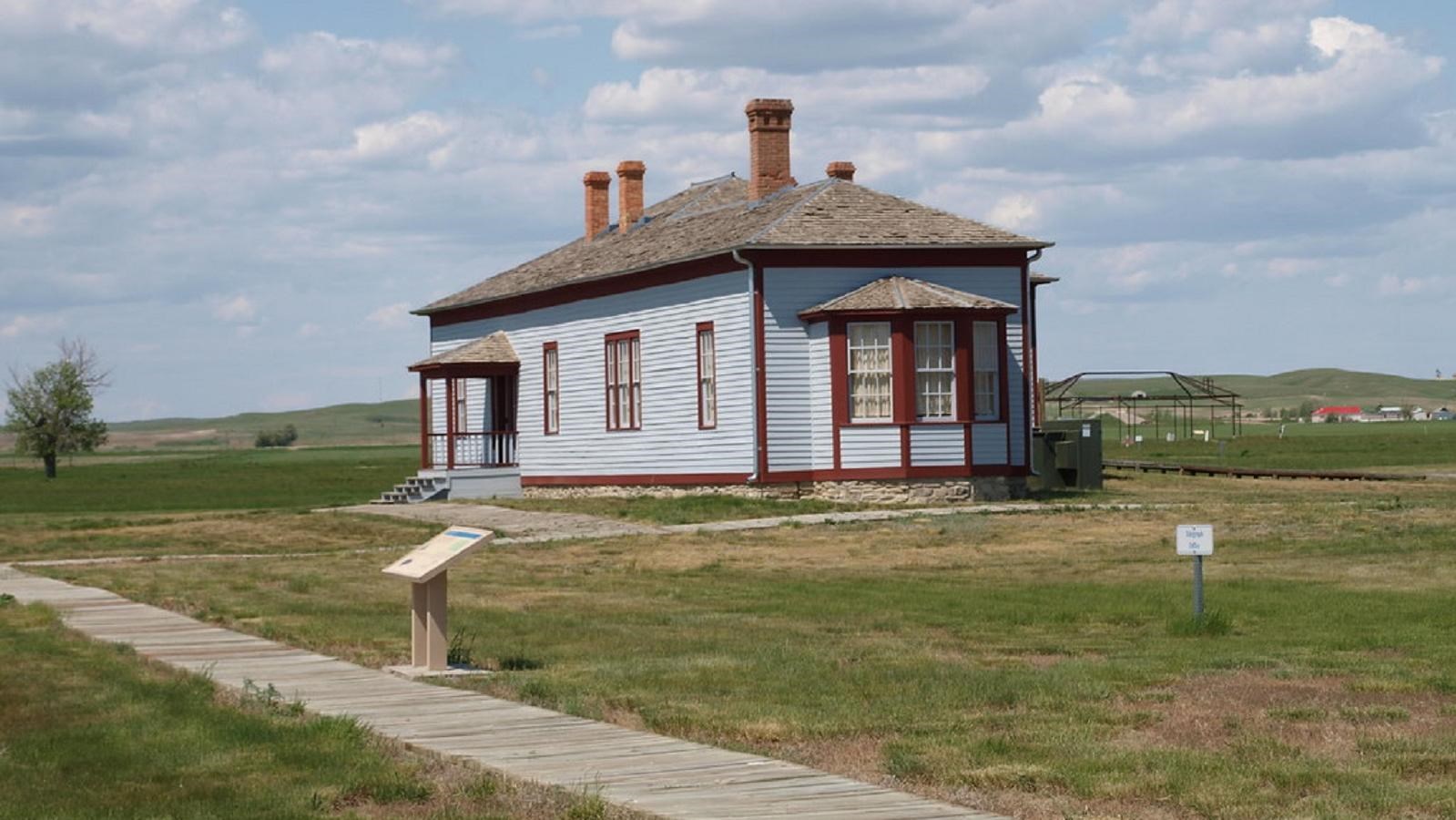Last updated: May 21, 2021
Place
Missouri-Yellowstone Confluence Interpretive Center Near Fort Buford

"Fort Buford" by minnemom is licensed under CC BY-ND 2.0
Accessible Rooms, Accessible Sites, Beach/Water Access, Benches/Seating, Boat Ramp, Fire Extinguisher, Gifts/Souvenirs/Books, Historical/Interpretive Information/Exhibits, Information, Information - Ranger/Staff Member Present, Parking - Auto, Parking - Boat Trailer, Parking - Bus/RV, Picnic Table, Restroom, Scenic View/Photo Spot, Tactile Exhibit, Telephone, Theater/Auditorium, Ticket Sales, Toilet - Flush
Lewis and Clark NHT Visitor Centers and Museums
This map shows a range of features associated with the Lewis and Clark National Historic Trail, which commemorates the 1803-1806 Lewis and Clark Expedition. The trail spans a large portion of the North American continent, from the Ohio River in Pittsburgh, Pennsylvania, to the mouth of the Columbia River in Oregon and Washington. The trail is comprised of the historic route of the Lewis and Clark Expedition, an auto tour route, high potential historic sites (shown in black), visitor centers (shown in orange), and pivotal places (shown in green). These features can be selected on the map to reveal additional information. Also shown is a base map displaying state boundaries, cities, rivers, and highways. The map conveys how a significant area of the North American continent was traversed by the Lewis and Clark Expedition and indicates the many places where visitors can learn about their journey and experience the landscape through which they traveled.
The Missouri-Yellowstone Confluence Interpretive Center is located near Williston, North Dakota, less than half a mile from the Fort Buford State Historic Site. The center offers exhibits related to the prehistoric, natural, tribal, and pioneer history of the area. The main gallery houses artifacts and information focusing on Lewis and Clark’s visit to the area in 1805 and 1806, the fur trade, Fort Buford, and the development of modern irrigation and electricity in North Dakota. Over 200 artifacts are housed here, including a frontier army transport wagon, a steamboat pilot's navigating wheel, and a 1904 Model A Cadillac. There’s also a small gift shop, boat ramp, and campground nearby. Those wishing for a more riparian experience may walk along the river on maintained trails just like countless Native Americans and explorers have done for hundreds of years.
At Fort Buford, visitors can explore the remnants of the frontier military post and stand in the room where Sioux Chief Sitting Bull offered his surrender. The officers’ quarters now serve as a museum with exhibits depicting army life on the plains and the role of women at an army base. Other original buildings remain, including the stone powder magazine and a wood-frame officer of the guard building. Visitors can also stroll through the fort cemetery containing the reconstructed grave markers of fallen soldiers.
A $5.00 admission fee provides access to a 20-minute film and guided tour through both the interpretive center and the buildings of Fort Buford. The area is well known for recreational events including a paddle-fishing operation in the spring and the annual Fort Buford Sixth Infantry Frontier Military Encampment in the summer. For more information of the Missouri-Yellowstone Confluence Interpretive Center, visit: https://www.history.nd.gov/historicsites/mycic/index.html. For more information of the Fort Buford State Historic Site, visit: https://www.history.nd.gov/historicsites/buford/index.html.
